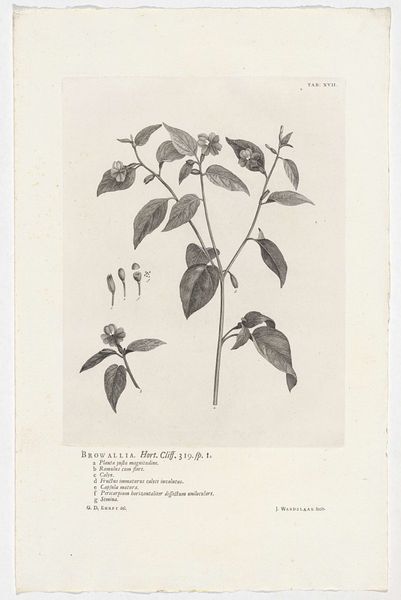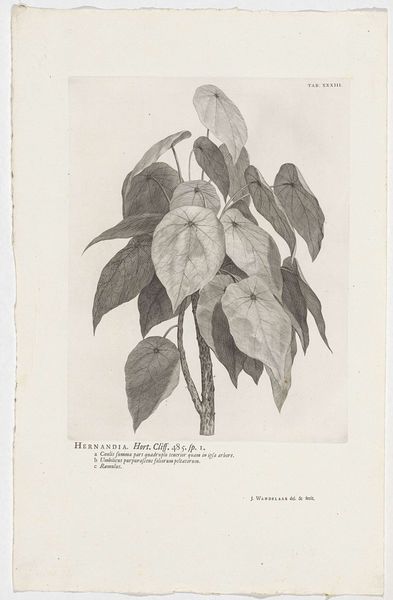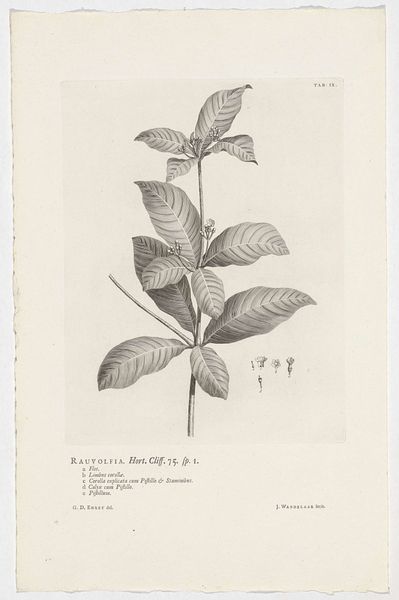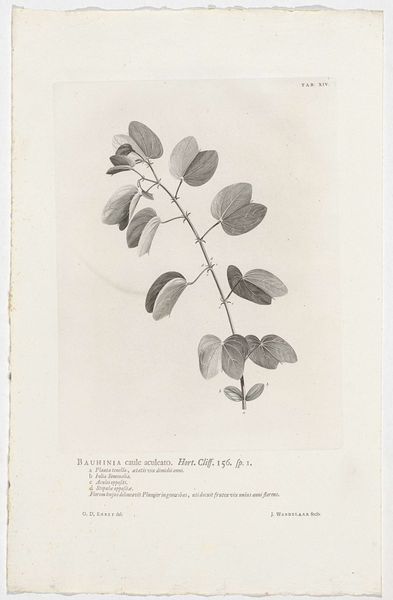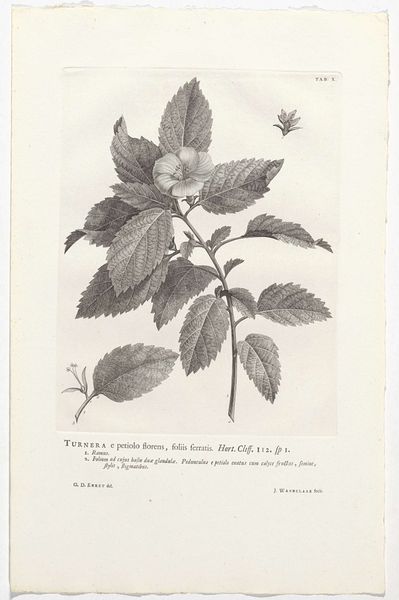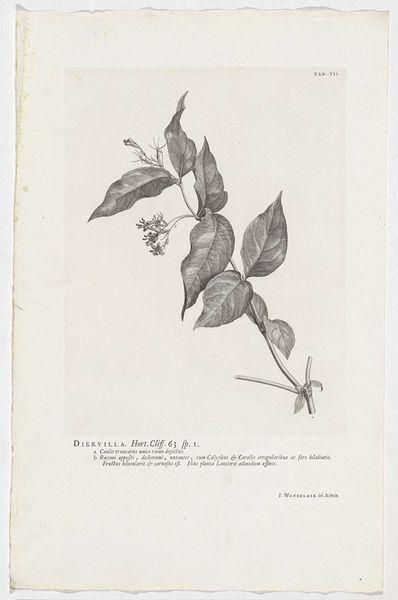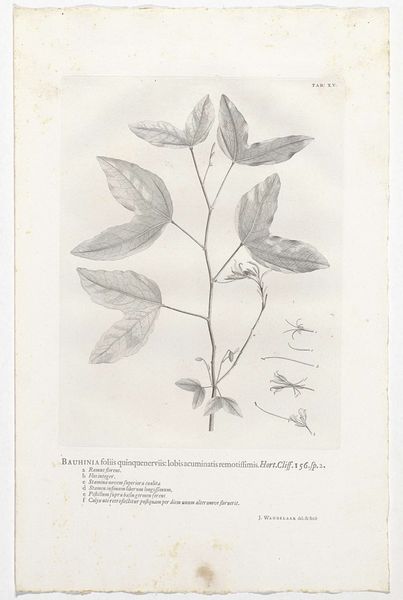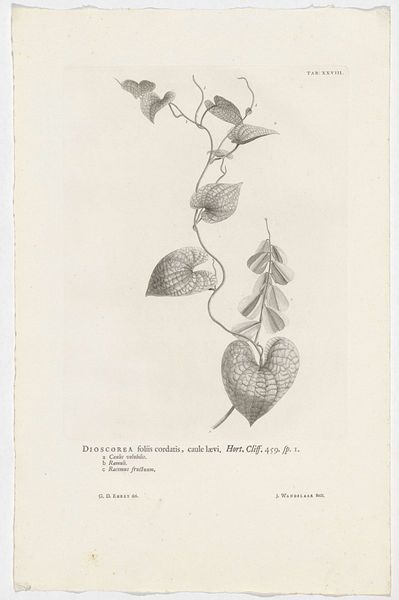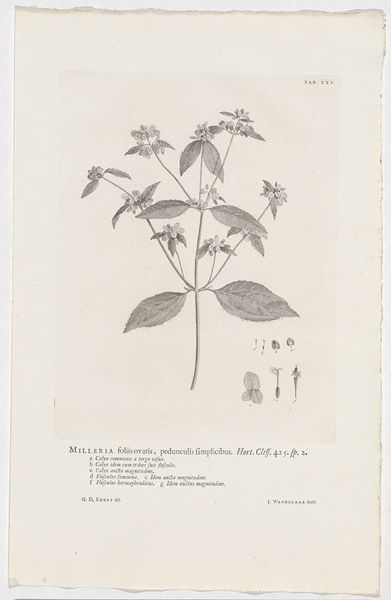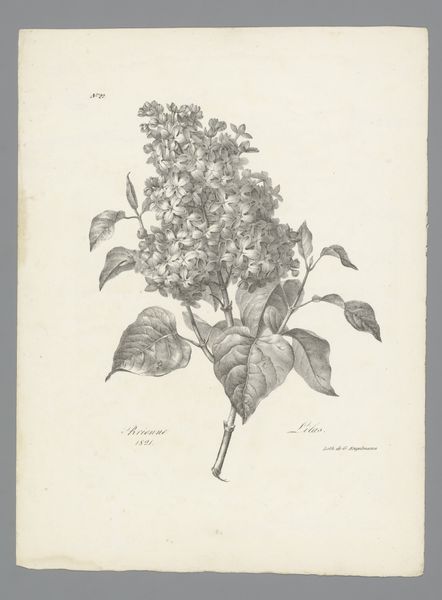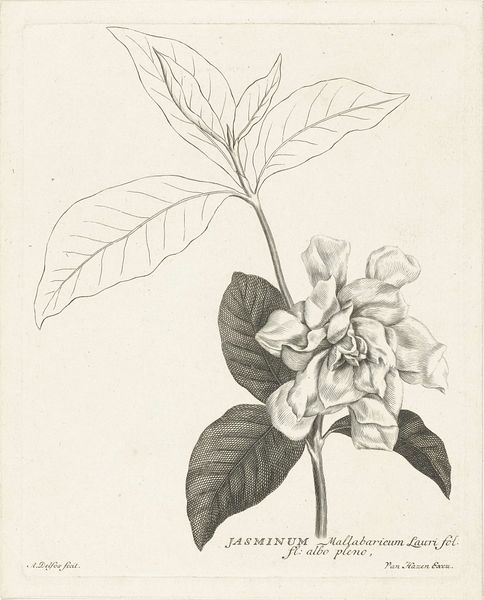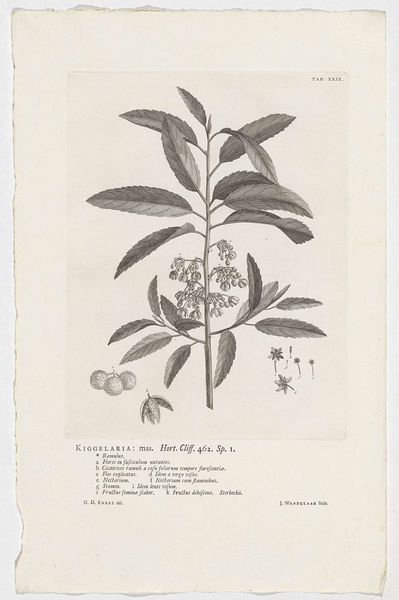
drawing, print, engraving
#
drawing
# print
#
old engraving style
#
flower
#
11_renaissance
#
plant
#
line
#
engraving
#
realism
Dimensions: height 287 mm, width 221 mm
Copyright: Rijks Museum: Open Domain
Curator: Looking at this artwork, "Heliocarpus americanus," dating back to 1738 and residing here at the Rijksmuseum, what’s your immediate impression? It’s a drawing and print, an engraving by Jan Wandelaar. Editor: A symphony of gray. The leaves, densely packed and finely etched, have this palpable texture. The use of line and the contrast create a somewhat melancholy stillness, almost as if holding its breath. Curator: That melancholy perhaps echoes the 18th century’s scientific fervor meeting artistic sensibility. These botanical illustrations were vital to classifying and understanding the natural world, reflecting a new public need and aesthetic for conveying natural sciences. Editor: I agree. Look closely, and one can trace Wandelaar's skilled hand – the stippling technique builds subtle variations in tone. Notice the details, like the veining in the leaves. And there are mathematical relations present as well in the composition. Curator: And its impact wasn’t confined to the botanical world. It intersected with wider society, influencing garden design and colonial economic policies by classifying plants with cash crop potential. It represents the scientific world as a very specific art world of the time. Editor: Indeed. It's an object of immense labor. This isn't merely replication; it is a construction of reality through careful formal decision-making. It seems every decision from scale to position had to be considered at length. Curator: Absolutely, we often view the pursuit of knowledge as being very separate from aesthetic taste or public desires, but here in the 18th century, science and aesthetics very actively reinforced one another, making works like these quite successful. Editor: A reminder that careful looking rewards. Thank you. Curator: My pleasure; it’s important to remember that it represents more than simply the botanical aspects, and also how aesthetics were shaping social actions at the time.
Comments
No comments
Be the first to comment and join the conversation on the ultimate creative platform.
